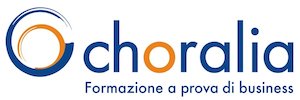Secondo un recente articolo dell’Harvard Business Review vi sono in particolare 5 aspetti su cui vale la pena investire per stare al passo con la trasformazione digitale odierna.
1 Commitment del top management
E’ necessario che da parte dei livelli più alti dell’organizzazione vengano lanciati messaggi forti con azioni concrete a supporto della trasformazione digitale. Ad esempio, in L’Oréal il segnale è stato lanciato attraverso l’assunzione di Lubomira Rochet come Chief Digital Officer e il suo inserimento dell’ executive team. Il suo primo task consisteva nel progettare un programma di leadership indirizzato al top management per lo sviluppo di competenze e mindset fondamentali per crescere in una era digitale. In questo modo, ha posto le basi per una strategia digitale condivisa da piccoli gruppi autonomi ma allineati sugli stessi valori e comportamenti necessari per il successo della strategia stessa. Per familiarizzare con i nuovi strumenti digitali, il top management potrebbe essere chiamato a testarli direttamente sulla propria esperienza, per esempio decidendo di introdurre anche internamente gli stessi canali e tools digitali utilizzati per comunicare con il consumatore esterno.
2 Accesso diretto ai consumatori
Le aziende che stanno avendo successo hanno investito nel trasformare i modelli di contatto con il cliente, in particolare nel retail, dando ai dipendenti un accesso diretto ai consumatori. La trasformazione digitale offre infatti la possibilità di accorciare le distanze fra prodotto e cliente finale. Inoltre, emergenti strumenti come social media listening, user research e journey mapping permettono di avere insight sempre più attendibili rispetto ai gusti e alle abitudini dei consumatori. Questo facilita l’organizzazione nell’avviare un cambiamento organizzativo necessario per adattare e indirizzare la propria struttura alle esigenze sempre nuove del cliente.
 3 Agilità organizzativa
3 Agilità organizzativa
Oggi i tempi di cambiamento ed in particolare delle abitudini e desideri dei consumatori sono molto rapidi e bisogna riuscire a seguirne il ritmo. Per questo motivo, l’agility organizzativa è una delle chiavi di successo per intraprendere la trasformazione digitale. E’ fondamentale facilitarla stabilendo un piano quotidiano, di attività e comportamenti tangibili da seguire, che aiuti i dipendenti ad agire più velocemente.
4 Employees Experience attrattiva
Si sente spesso parlare di “customer experience”, ma per facilitare la trasformazione digitale è necessario porre la stessa attenzione nei confronti della “employee experience”, incentivando modalità di lavoro più fluide per riuscire ad attrarre e trattenere i talenti. Investire nel design dell’ experience dei dipendenti, significa avvicinarsi sempre di più alle loro aspettative, alle loro motivazioni e leve di soddisfazione. Significa in altre parole, considerare i dipendenti come clienti interni e dunque ragionare secondo i principi della customer experience sfruttando e trasponendo all’interno dell’organizzazione le best practices consolidate verso l’esterno.
5 Lifelong learning
Per rimanere al passo con i tempi, non è più possibile pensare al lavoro e all’apprendimento come due a due momenti separati. E’ necessario investire nell’apprendimento continuo e on the job, ripensando contenuti, formati e canali formativi per allinearli alle esigenze dei lavoratori dell’era digitale. Le aziende che si sono già mosse in questa direzione hanno puntato su un’organizzazione smart e agile della formazione attraverso pillole formative, lezioni online, gamification, costruzione di piattaforme digitali orientate al social learning e workshop intensivi per lo sviluppo di competenze più complesse. Grazie alle avanzate tecniche di people analytics è possibile costruire percorsi mirati e indirizzati a specifici target, rendendo la formazione sempre più personalizzata e connessa alle concrete necessità che i lavoratori hanno per ottenere migliori performance e risultati di business.
Riportiamo di seguito l’articolo originale:
5 Ways to Help Employees Keep Up with Digital Transformation
The consumer packaged goods (CPG) landscape is in the midst of a significant shake-up. Coca-Cola recently reshuffled its leadership team to focus on growth, innovation, and digital. Unilever has acquired Dollar Shave Club, a young startup, for $1 billion in a move to introduce a new model of subscription sales. L’Oréal has made a strategic investment in Founders Factory, a digital startup accelerator. And at Greycroft, a venture capital firm, investor Teddy Citrin has laid out a veritable map for the further disruption of every consumer products category.
From our view and experience, what underpins the success of these new ideas and approaches is the abilities, skills, and mindset of the company’s workforce. In our work with leading consumer products companies around the world, we’ve identified clear practices and investments that bring a greater chance of success in organizing a workforce around the expectations and needs of the connected consumer. Here are five:
Commit from the Top
The rallying cry for new ways of working in the digital age must start at the top. At L’Oréal, CEO Jean-Paul Agon signaled the company’s digital transformation when he recruited Lubomira Rochet to be the chief digital officer and a member of the executive team.
One of Rochet’s first tasks was to create a leadership development program that equipped executives with the knowledge, mindset, and ways of working the company would need to grow in the digital age. The top 1,000 executives at L’Oréal have participated in a range of learning experiences, enabling them to build digital road maps for their regions and businesses and to model the behaviors that their team members must embrace to execute on these plans, such as a willingness to experiment, an openness to external partnerships, and more autonomous team structures. “A clear, easy-to-memorize digital group strategy is now vocally championed by leadership across the company,” Rochet says.
Another way to signal commitment from the top is if CPG leaders actually engage with the tools their consumers use. Pete Blackshaw, Global Head of Digital & Social Media at Nestle, advocates for CPG leaders to personally embrace the use of emerging digital platforms and channels in order to make this new paradigm real to employees, agency partners, and suppliers.
“I’m constantly using and testing new platforms — live video, posts on Facebook, Instagram stories, and more. Experiencing this for myself gives me that extra edge to ask the tough questions and challenge some of the sales pitches from agencies and tech companies trying to sell me that big campaign,” Blackshaw says. “Personal experience makes me a more effective marketer.”
Give Employees Direct Access to Consumers
Fast-growing consumer products companies such as Warby Parker, Glossier, and Dollar Shave Club are upending the traditional retail model, which depends on a manufacturer selling to a retailer that then sells to the end consumer. Plug-and-play e-commerce technology, search engine optimization, and other distribution solutions are making it ever easier for products to directly reach consumers. This shift gives CPGs an opportunity to gain rich insight into the tastes and habits that drive their sales. Gaining this insight, however, requires a simultaneous shift in organizational structure to bring internal teams much closer to consumers. New and emerging tools such as social media listening, user research, and journey mapping can be powerful enablers to guide CPGs digital transformation.
One such example is Connected Home, a unit set up by British utility company Centrica to build “smart home” appliances. The team was structured to operate like a startup, with a particular focus on user research, feedback, and a commitment to lean operations. This approach helped Connected Home’s Hive “smart thermostat” device become a market leader in just a few years. Kassir Hussain, former director of Connected Home, told us: “In a space that can often be confusing and frustrating to consumers, our focus on regular user interviews, meetings, tests, and demos allowed us to build a product that was simple, easy to use, and addressed real consumer needs.” In a competitive energy market, the Connected Home unit has now become a major differentiator and profit driver for the parent company, Centrica.
Help Employees Embrace Agility
Agility is key to success when undertaking digital transformations. Today’s technologies and consumer needs change faster than traditional business road maps can deliver, and employees need to be ready and empowered to move at this pace. The best way to drive this shift is to establish a set of tangible day-to-day activities and behaviors that enable employees to act quickly.
One such activity was introduced by Deb Henretta while leading P&G Asia. She pushed her teams to move to 24/7 monitoring of all digital assets — owned sites, customer sites, and social media channels. She introduced a set of live dashboards and frequent reports that helped the team keep a constant pulse on consumer behavior and activity. This was a pace far faster than the quarterly and annual reviews they were used to when all products were sold in a physical environment. But the team learned to keep a close eye on everything from page load times to consumer reviews to social media sentiment.
Invest in “Employee Experience Design”
Some leading companies are drawing on user experience design to rethink their employees’ experience, in a bid to more effectively attract and retain critical talent and to embrace more open and fluid ways of working. They want a better understanding of the motivations of employees, many of whom are in new and evolving roles, or are from a generation with significantly different career motivations and expectations. Using tools such as journey maps, persona development, and user research, these companies are able to transform the way employees experience their time at the company along every major milestone.
LVMH’s Fashion Group, part of the massive French luxury products group, is one team that’s embracing this approach. “Borrowing from fields like user experience design, we’ve been able to reconsider crucial aspects of recruiting, onboarding, development, and retention to create journey maps to enhance the employee experience,” says Nathalie Cheveau, global talent development manager at LVMH Fashion Group. At Céline, one of their French luxury brands, an employee journey map resulted in four new initiatives to mitigate high and low points for key commercial staff in Paris. One such initiative is a new job shadowing program that allows employees to better understand other roles across the company, thereby driving greater employee mobility, a crucial asset in an environment of transformation where roles and organizational structures change more often.
Invest in Lifelong Learning
As large CPGs grapple with the pace of change in their industry, learning and doing can no longer be separated. Leading CPGs must invest in regular and frequent upskilling initiatives, delivered in formats that are in line with the increasing demands on employees’ time.
Over the past year, more than 14,000 L’Oréal employees have enrolled in and completed a dedicated upskilling program, which includes a required set of online lessons and targeted workshops focused on practical skills led by individual markets and developed both by General Assembly and internally at L’Oréal. (One of us works for and the other advises General Assembly.) These include skills such as search engine optimization, digital media allocation, and digital analytics.
This effort is led globally by Camille Kroely, Digital Transformation Learning Director at L’Oréal. “We worked hard to design a baseline of digital knowledge that we expect each employee to be able to reach,” Kroely says. “We provide countries with a variety of tactics, including gamification, incentives, executive communications, and more, to drive an impressive global completion rate of 90% against the recommended upskilling program track.”
These new skills are delivering results. L’Oréal now spends 32% of its net media budget on digital channels, and saw e-commerce sales jump by 33% in 2016 alone. The company continues to deliver impressive revenue and profit growth, and leads the way in innovation in the beauty space worldwide.
Digital transformation is not just about technology. The way a company communicates with its employees, organizes them, and reskills them will play a fundamental role in its ability to take advantage of the new paradigm of the consumer products landscape.


Leave A Comment
You must be logged in to post a comment.